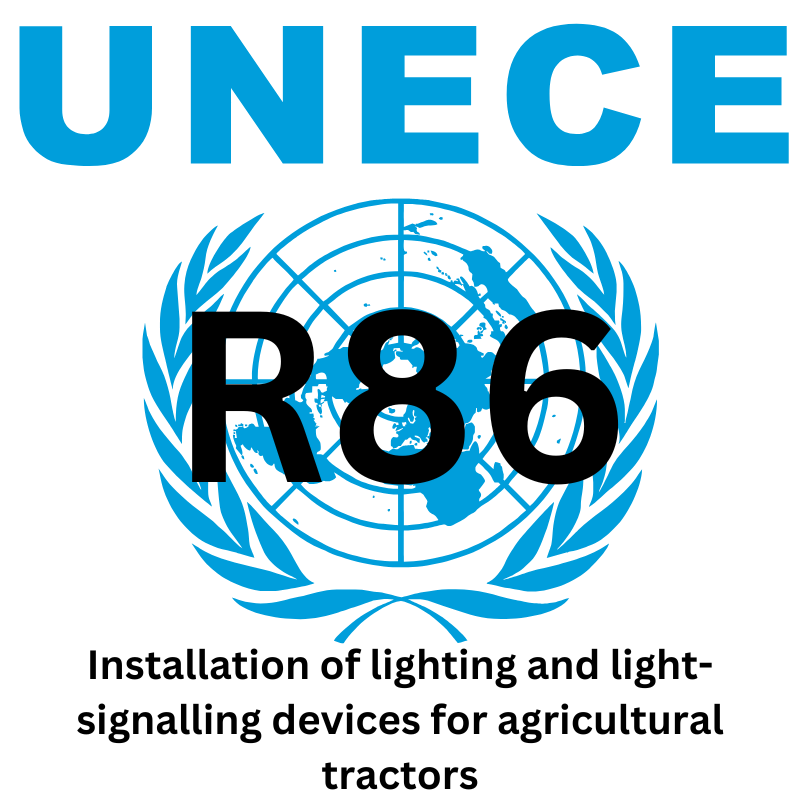Guide To: UNECE R86 - Installation of lighting and light-signalling devices for agricultural tractors
23 July 2023

Guide To: UNECE R86 - Installation of lighting and light-signalling devices for agricultural tractors
UN ECE Regulation No. 86 sets out the uniform provisions concerning the approval of agricultural and forestry vehicles with regard to the installation of lighting and light-signalling devices. This regulation ensures that such vehicles are equipped with appropriate lighting systems to enhance safety on public roads and in agricultural or forestry environments.
Scope of the Regulation
UN ECE R86 applies to:
- Agricultural and forestry vehicles in categories T, R, and S, which include tractors, agricultural trailers, and towed machinery.
Key Features of UN ECE R86
Lighting and Light-Signalling Devices:
- The regulation covers various lighting and signalling devices that must be installed on agricultural and forestry vehicles. These include main-beam headlamps, dipped-beam headlamps, direction indicators, hazard warning signals, and more.
- The devices must meet specific performance standards for visibility and durability, ensuring that the vehicles are safe to operate in both day and night conditions.
Geometric Visibility and Mounting Requirements:
- The regulation specifies the placement of lights to ensure maximum visibility from different angles. For example, the lights must be positioned to ensure their visibility from both the front and rear of the vehicle.
- It also outlines geometric visibility requirements for each light type, ensuring that other road users can see the lights from different distances and angles.
Durability and Environmental Resistance:
- Lighting devices must withstand the harsh conditions often faced by agricultural and forestry vehicles, including exposure to dirt, moisture, and vibration.
- The regulation includes durability tests to ensure that the devices continue to function effectively even after long-term exposure to these conditions.
Specific Provisions for Lamps:
- UN ECE R86 includes detailed provisions for each lamp type:
- Main-beam and dipped-beam headlamps: Positioned to avoid dazzling oncoming drivers while providing sufficient illumination of the road ahead.
- Direction-indicator lamps: Required to signal turns and changes in direction clearly to other road users.
- Stop lamps and hazard warning signals: Ensures that vehicles can signal their intention to stop or warn of hazards.
Conclusion
UN ECE R86 plays a crucial role in regulating the lighting and light-signalling systems for agricultural and forestry vehicles. Compliance with this regulation ensures that these vehicles are equipped with lights that meet safety standards, enhancing their visibility and ensuring road safety. Manufacturers and operators of such vehicles must ensure their lighting devices are approved under this regulation to maintain compliance and safety.